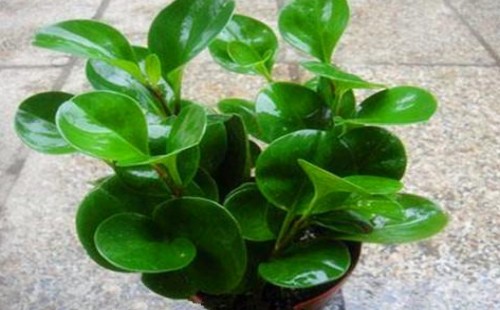How to raise rootless orchids
The emergence of rootless seedlings of orchids is mainly due to unscientific watering in the process of cultivation, or caused by empty roots and rotten roots caused by excessive application of fertilizer. But sometimes in order to save costs, we can also try to plant rootless seedlings, so, how to raise rootless orchids? How to deal with the emergence of rootless seedlings?

Usually, once found, we need to clean up in time to avoid infecting other healthy parts. The main purpose is to remove dead branches and rotten leaves and cut off rotten roots until they are white. Then use carbendazim and other drugs for antivirus and sterilization. But for rootless seedlings, it is best to cut off half of the leaves and keep the height at 15 cm, so as to save some nutrients to promote root and sprouting.
In this case, the ability of orchid plants to absorb nutrients and water is limited to a large extent, mainly relying on pseudo-corm transport, so it is suggested to cut off some leaves of rootless seedlings, otherwise it will affect the germination of new roots, and then affect the growth of orchid seedlings. But if we want rootless orchid seedlings to come back to life, we also need to go through the following operations.
I. preparation of plant materials
First of all, we need to reasonably prepare plant materials according to the growth needs of orchid seedlings, we can use fine plant materials, and then mix 15% rice chaff ash and 15% mountain mud. If there is no these substrates, we can use burned cinder ash.
However, there are many ways to prepare plant materials, and you can also use snake sawdust, coarse sand, sawdust, fine particles of broken bricks, and so on. As long as the fertilizer effect of the plant material is not strong, loose and breathable, it is OK. However, the editor still recommends the use of rice chaff ash, because this plant has a very good effect on the germination of new roots and new buds of rootless seedlings.
2. Planting in pots
The depth of the flowerpot used for potting should be appropriate, to ensure that the pseudobulm of the orchid plant is maintained at the position of 2/3 of the pot depth, and then cover the pseudobulm with a thickness of 0.5-1cm, so that the pot planting can ensure a better moisturizing effect and avoid dehydration of rootless orchid seedlings.
III. Maintenance and management
After completing the pot planting, the pot should be placed in a cool and ventilated place to avoid direct sunlight so that it can receive scattered light. If the potted plant is placed in a high-temperature outdoor environment, it is recommended to set up a sunshade net for it. Usually pay attention to the dry and wet condition of the plant material in the basin, and do a good job of replenishing water and moisturizing in time. Especially in the rapid growth of orchids, we must ensure that the basin can maintain a certain degree of humidity.
In addition, growth hormone products can promote the rooting and germination of rootless orchid seedlings, but they can only be applied at the right time. If the orchid plant is dormant and applied to it, the effect on rooting and germination is not very obvious. The main reason is that the ambient temperature is not enough, which encourages it to keep growing and usually dies during the growing period. However, it can be done at room temperature.
In general, the application of growth hormone to rootless orchid seedlings should be carried out in the growing period, because in the growing period, the growth factors of orchid plants are full of vitality, well absorbed, and the effect of germination and rooting is more obvious. It is usually carried out from January to October every year, and the scientific proportion is generally carried out according to the instructions for use. Rootless seedlings can be irrigated once a week and should be carried out three times in a row.
But we can also take the method of soaking roots with hormone and water to promote rootless seedlings to take root and sprout again, usually soaking for about 30 minutes. At the same time, fixed basin water can also be used to irrigate, but growth hormone should not be applied at this time, because rootless seedlings do not need nutrients at this stage, and we need to ensure that they survive the winter safely.
Usually when the new seedlings grow to a height of more than 3 cm, the new roots and buds basically grow steadily, so we can properly replenish the nutrients. Usually you can apply some dilute liquid fertilizer, such as potassium dihydrogen phosphate diluent, cake fertilizer and water, etc., and keep in mind that the concentration must be low enough. After that, we can manage the rootless seedlings of the past as ordinary orchid seedlings. Because of the rootless seedlings before, they have been completely fed at this time.
Time: 2019-05-29 Click:
- Prev

How to keep Hydrangea fresh in Water
Hydrangea is rich in color, flowers open in clusters, not only huge, but also very beautiful, although it is a common flower plant, it often brings me a great surprise. Hydrangea can be used not only as an ornamental potted plant, but also as a cut flower. It is a very popular plant variety.
- Next

How does potted Jasper grow fastest?
As we all know, potted Jasper has high ornamental value. So, how can potted Jasper grow the fastest? The main reason is that the maintenance management should be proper, as long as the method is scientific and reasonable, it will grow rapidly, which is mainly determined by its maintenance environment. The main reason is that the soil environment and light and temperature management should be suitable.
Related
- Fuxing push coffee new agricultural production and marketing class: lack of small-scale processing plants
- Jujube rice field leisure farm deep ploughing Yilan for five years to create a space for organic food and play
- Nongyu Farm-A trial of organic papaya for brave women with advanced technology
- Four points for attention in the prevention and control of diseases and insect pests of edible fungi
- How to add nutrient solution to Edible Fungi
- Is there any good way to control edible fungus mites?
- Open Inoculation Technology of Edible Fungi
- Is there any clever way to use fertilizer for edible fungus in winter?
- What agents are used to kill the pathogens of edible fungi in the mushroom shed?
- Rapid drying of Edible Fungi

